Tom Dixon, interviewed by Ambra Medda
Rebel Rebel
-
Rebel, maverick, designer Tom Dixon
Courtesy of Tom Dixon
-
Awww!
Courtesy of Tom Dixon
-
Tom Dixon, back in the day
Courtesy of Tom Dixon
-
The young Dixon as a potter
Courtesy of Tom Dixon
-
Tom Dixon recovering from a motorcycle accident
Courtesy of Tom Dixon
-
Scrapchair (1984)
Photo © Bonhams Auctioneers
-
S-Chair for Cappellini (1992)
Courtesy of Tom Dixon
-
Pylon Chair for Cappellini (1992)
Courtesy of Tom Dixon
-
Great Chair Grab (2006)
Courtesy of Tom Dixon
-
Limited Edition CU29 Chair (2007)
Courtesy of Tom Dixon
-
The Dock (est. 2009)
Courtesy of Tom Dixon
-
Dixon at MOST (2012)
Courtesy of Tom Dixon
-
Tom Dixon for Adidas
Photo © Adidas
-
Tom Dixon for Adidas
Photo © Adidas
-
Tom Dixon for Adidas
Photo © Adidas
-
Mass Dining Table (2013)
Courtesy of Tom Dixon
-
Tom Dixon
Courtesy of Tom Dixon
Ambra Medda first met Tom Dixon when she was a young girl. At the time, Dixon was working with Themes & Variations, a London design gallery co-founded by Medda’s mother, Giuliana. “I was five or six,” Ambra says, “and he made me a fish tank out of welded metal. I remember going to the market with him in East London, where he bought me the craziest looking black fish with huge eyes.” She goes on: “I remember him letting me drive his car, and I remember his car being really big. He’s always loved cars and motorbikes—and tea.”
In the twenty odd years since, the two have remained close friends. As such, Medda has had a unique opportunity to witness the evolution of Dixon’s career, and his seemingly limitless ability to transform and readapt to the market. “He is brave and independent. If he sees a need for something, he simply creates it. He’s done it all, and he’s done it on his own terms. Tom put a face on British design in the ’80s and ’90s; and he’s owned it ever since.”
A self-taught designer and businessman, Dixon has never bowed to convention. He is an art school dropout and a former musician (he spent a few years as bassist for a rising British band called Funkapolitan) who also worked in London’s club scene. During the early ’80s, while still in his twenties, Dixon fell in love with welding while recovering from a motorbike accident. Using primarily found materials, he began designing innovative furniture and sculpture. The design world embraced his punk-like, DIY attitude and definitive sense of style, as well as, of course, his massive talent, witty charm, and good looks.
Throughout his career, Dixon has readapted himself and his business multiple times to market and industry demands: He’s self-produced pieces; worked with the world’s biggest furniture factories and brands; spent a decade at the helm of Habitat, Terence Conran’s home furnishings company; served as Creative Director of Finnish furniture manufacturer Artek; and propelled his own Tom Dixon Studio (formally launched in 2002) to great new heights as both a design and manufacturing brand. Recently, he opened a new multi-purpose studio space on London’s Portobello Dock; launched MOST, an alternative exhibition space and event coinciding with Milan’s Design Week; and debuted a line for Adidas. But whether he’s giving away 1000 Blow Lights in Trafalgar Square or collaborating with the likes of Jean Paul Gaultier and Driade, Tom’s always managed to stay ahead of the curve.
Dixon and Medda sat down recently to discuss the past and the present—and to consider the threads that run through a career forged on the road less traveled.
Ambra Medda: You were born in Tunisia, correct?
Tom Dixon: Yup.
AM: So how was birth? How’d that go down? [laughs]
TD: [laughs] I think there was a Tunisian wedding going on next door, so I came in to the world to the sounds of a traditional wedding party.
AM: That seems fitting.
TD: I spent a year in Tunisia, then a year in Morocco and a year in Suez, in Egypt, before I came to England when I was four. I went from North Africa to Huddersfield, in the north of England, which was a very cold winter indeed. So my early years were a bit of a culture shock.
AM: Were you there for boarding school, or did you go with your parents?
TD: I was with my parents. The only job that they could get was in the north of England in Yorkshire. My dad was a teacher. My mother was a journalist and translator on the BBC.
AM: Wow, I didn’t know that. And what happened from there? You didn’t have a formal design school education; you are pretty much self-taught, which is amazing. If I understand correctly, you got into music early on, and then started welding right around the time of your accident?
TD: So two years in Huddersfield, then down to London when I was six, and I’ve been in London ever since. I don’t have any qualifications; though I did study A Level pottery. I did many basic jobs when I left school: I colored in cartoon films when they were still colored in by hand. I was a printer. And while I was doing those jobs, I was involved in a band. That started taking off, and I became a musician for two years. Then yes, my accident, but by that time I was in the nightclub business. That left me a lot of time during the day to indulge my new hobby of welding.
Then the welding took off; that was sort of an easy path. I just found my pace. I am very impatient, so welding has the advantage of being very fast to create quite strong structures. You can make things, cut them back up, and remake them very fast.
I found a space that I funded initially by working nights. I had free days, and, pretty quickly, the people who were involved in the club scene—people involved in photography, hairdressing, fashion, or videos—all needed stuff. So a video director might ask me to make a prop. Or Vivienne Westwood might need some shop fitting. I practiced and learned a lot just by making.
AM: Is this the phase when you were using salvaged materials?
TD: I started off with found objects to practice welding; quickly, the ready-made forms suggested chair legs or lamp stands to me, and I was making furniture for almost nothing. The first exhibition was all made from scrap metal, which we had bought by the ton, and dropped in a vacant shop on Kensington Church Street— welded in the shop front for a week, until the opening of the show that we called Creative Salvage. It was easier to be anti-establishment at the time, because the look in London then was either the tail end of Postmodernism or a Laura Ashley-inspired Victoriana, so the rusty metal felt like a radical counterpoint.
Then it started becoming less pieces for other people, and more objects I was making for myself and exhibiting, initially in Japan and Germany, in design galleries or even artifact or craft galleries. I was exhibiting much more abroad and selling to private clients.
Then I met your mum and Lillian [Giuliana Medda and Lillian Fawcett, co-founders of Themes & Variations], and did some work through them. But by that time I was starting to build up to several assistants and bigger workshops, and I was becoming more international. That is when I met the Italians, like Cappellini.
AM: Right. So how long after working with Cappellini and such did you move onto Habitat?
TD: I spent about 10 years building my own studio, which had become about 15 people by then. I’d changed studios maybe six or seven times, and had bought a shop with your mum.
AM: Remember it was called Space?
TD: [laughs] Yes, and then she left, and so I did it on my own. There was quite a large infrastructure for metalwork then, but it was all a bit shaky. I was untaught in business, untaught in marketing, untaught in sales, untaught in manufacturing and designing, so it was a lot of stuff that I didn’t know a great deal about. And then the job at Habitat must have been in ’98 or so.
AM: You really helped rejuvenate the whole brand. Could you tell us a little bit about what that process was like?
TD: At the time, it was owned by Ikea, so for me it was a window into the biggest furniture company in the world. Through Habitat, I got to learn about the whole world of logistics.
The first project I did at Habitat was this 20th Century Legends project [a 1999 Habitat collection of 13 re-editions by famed contemporary designers—and a major success for the brand]. I had to act quickly, and developing new design takes a really long time, so I decided I would visit the oldest designers I could find, and forget about young design completely, just in the first three months, and reattach Habitat to its roots.
So I went around and I saw [Giuilo] Cappellini and [Verner] Panton and all of the people who were heroic to me, who had been active at the beginning of Habitat in the early ’60s, and I convinced them to participate. So quite quickly, I moved from being a designer to being creative director.
AM: That’s incredible. It sounds really educational, like that part of your life was a kind of school.
TD: Yes. But also it was self-propelled, inasmuch as I loved the fact that I was in a bigger infrastructure and in a global organization—and all of the potential that came with that. But that potential maybe lasts for six or seven years, and eventually I realized that I couldn’t take it further whilst a) it was owned by Ikea and b) I didn’t actually own the joint. I thought, realistically, if I’m going to be able to really make decisions, I’ve got to start off on my own again.
AM: You started your own company then?
TD: I started my own company while I was still at Habitat, and I stayed on the board at Habitat
a few extra years whilst my company was taking off. And this infrastructure here is now 10 years old, so that takes us up to the present.
I’ve committed to the idea of trying to mimic maybe more of a fashion infrastructure—in the way that you have your name and you hold onto the design, development, and distribution, rather than allowing other people to do it. Weirdly, I am still in this relatively unique position as to product design; I don’t sell design services like most to bigger infrastructures and manufacturers.
I do the development myself, not as a one-off or craftsperson, but as a global infrastructure. We sell to 60 countries. We’ve got stuff being made in another 12. We’ve got 75 people here and three in Hong Kong and three in New York. It’s reached a good size, but in the end it's a complex business that depends on refined logistics and an international perspective. I honestly believe it's possible to have a local personality on world stage.
AM: I’m sure that not having to compromise your vision must be incredibly rewarding. I know that there are always battles and limitations, but still.
TD: I did try every single way of not compromising my vision [laughs], but there’s always a compromise. That is what you realize in the end.
I think we have a bit more mastery over our destiny than a lot of people, but the downside is we’ve seen the compromises: You are not able to invest as much in tooling or you are not able to piggyback on somebody’s expertise—like Flos or Moroso, who are super experts on upholstery or super experts on lighting. We are doing it all ourselves.
AM: Now let’s discuss the Dock [Dixon’s multi-use workspace, since 2009, at London’s Portobello Dock]. You work there, and it’s also become a destination in London. It’s a multipurpose space with offices, a showroom, exhibition and event spaces, and a café. I understand the restaurant has played an exciting role in your life the last few years, too: You have a good relationship with the chef, Stevie Parle, who has a really nice approach to food that seems very much in harmony with your vision. Can you tell us about the Dock and what’s happening there?
TD: I thought, after working in proper offices, that it was madness, and that I should take control over the way we live at work and the way the work is exhibited. I think that most furniture brands have static showrooms. Furniture is a very slow-moving, static product in a way; it doesn’t have the life and energy of fashion or food.
So I was determined, and this was a lesson I learned from working in Italy with the Italian brands: They all have a canteen that they take very seriously, where the workers and bosses and clients can all meet, or they’ve got a favorite restaurant where they will take a two-hour break and talk business. The idea centers on the connection between food and business; that you make better decisions if you take the time to discuss, over food, and if you slow down a bit.
When we were looking for a new studio, maybe four years ago, it was somewhat fortuitous for us in that it was the first leg of the financial crisis. All of a sudden, real estate wasn’t moving, so I managed to get a much bigger chunk. We are happy recipients of a recession in a way. I think part of my history has been about starting up in recessions. I am recession chic.
Anyway, I am fortunate that the Dock is one more way of being able to express the substance behind the products—and that we’re doing it in a place that’s got reams of narrative and history to do with the Industrial Revolution. The canal itself is the conduit for all of the stuff that was ever made in the UK and sent out to the whole of the world in the 18th century, and, conversely, all of the imports that were coming from all of the territories on their way back.
So we use a lot of that feeling, where we’re reinstituting some of the values of entrepreneurship and 'Britishness'—just taking the good bits and ignoring the bad, and being in a place that reeks of that history is great. The dock has this aura of enterprise, which comes partly from the canal and partly from the fact that it was Richard Branson’s headquarters as well for 10-15 years. He amalgamated the two buildings, and it was full of the record industry at the time. It’s had two amazing lives, and now we are giving it a third.
And there’s the quality of life that comes from having that outdoor space and the water. We forget how lucky we are, being in the middle of London and also having all those assets. So we don’t move from here. I just say come for lunch, and people do.
And the food: You are right; there is a connection between Stevie’s food and our work. I’ll take a shift in the kitchen once every couple of weeks, and I have learned a lot from working there. It is the importance of good, quality ingredients; nothing messed around with too much. That is probably the thing that links the products and the food. Too many people—whether it is in furniture or in food—spend a lot of time making things ultra-complicated. And I think a British attitude might be about doing things a bit rougher and a bit simpler and a bit more basic than others, but also about really paying attention to the quality of the raw materials and the manufacturing method, if you like. That is the commonality.
AM: Part of the idea is, as well, that you recognized a need for something that didn’t exist, so you just made it. You seem to do things the way you want to do them—not with arrogance, but just because you see a need, so you make it happen. I remember that sensation when I started the fair. There is all this dynamic energy and great work—people just need the right platform. Similarly in concept, you’ve also created from scratch MOST, this new exhibition hub at Milan’s Museum of Science & Technology during Milan Design Week, which is really impressive. I’m wondering if you are going to use the space to exhibit again next year? Are there any plans?
TD: We’ve got to be careful that we don’t trap ourselves into something that we are not expert in, namely festival organization. You know better than I do how much energy is attached to doing that properly.
AM: You want to trigger something, right?
TD: In the modern world, it’s all about the network and the people with whom you collaborate. I think that you are so much stronger as a collective than you are alone, and I think in terms of how brands have tried to present themselves as unique and heroic; it is not that modern anymore.
What is better is to have like-minded people around you who share a sensibility, and then try and build something which has a bit more critical mass and breadth. Even before Habitat, I always liked the idea that you can get an assortment of things together, and, through collaboration with people, make some kind of sense or movement and present things in different ways than they are normally shown.
So, there is a cynical motive, which is that if we show on our own we won’t get critical mass. But I do think that all the exhibition spaces in Milan were becoming so controlled and trade-oriented, that they are forgetting that the whole scene has turned into a carnival of ideas, which is very exciting. But Milan remains this oddity of independent spaces, and there are two to three places where everybody is trying to make you sign up for space and control you in a way. I don’t think creativity works like this.
So I think there is room for it, but whether we manage it ourselves or not is the question at the moment. I think we will go ahead next year and we will participate, but we are trying to offload the organizational part of it. Everyone keeps saying that this is the end of Milan, that Milan is at the end of what it can do, but that is not true.
AM: I entirely agree with you.
TD: It’s extraordinary if you look at what it was like when we started, and what it’s like now.
AM: It was really only people from the established design industry.
TD: Right, so I am interested in this evolution also. Today, it is almost like a tourist industry. It’s not just about corporate sponsorship. I like the idea that people are travelling all across the world pretty much for a holiday to get to this design sensation. It’s like a conference, not a trade fair. Actually, less and less people do hard business there—meaning actually spending on furniture, which is odd. It’s become this entertainment and social thing.
AM: I think that people also want to be part of a community. I realized that through the fair as well; there is a desire to be a part of a something larger. And the design world is relatively open and accepting, so it will be interesting to see what happens with the evolution of that community.
What about your fashion line with Adidas? I loved your presentation during Salone last April; it was so striking and lyrical—almost monastic chic, if that’s even a thing [laughs]. It just felt like it wasn’t trying so hard. There was something so unflashy and calm about it that made it so desirable and smart; and the choice of colors was beautiful. How did that collaboration begin, and what’s happening now?
TD: We talked to Adidas about collaboration, and it quickly grew from being maybe one shoe to something serious. They signed us up for four seasons, which is a proper commitment. Other, nameless shoe or sports companies would probably do just a single object, so I think their commitment is quite deep.
From a design point of view, it was about trying to look at sportswear from a non-sportswear perspective, or fashion from a non-fashion perspective, and apparel generally from a reduced point. Stripping back was a natural reaction to the hyperactivity in sports garments—sticky plastic and go-faster stripes and breathing panels and all the rest of it—and the relentless pace of fashion, which means that almost by standing still you will probably stick out a bit more.
We’ve got the benefit of having no history in fashion whatsoever, so we can start from zero, which most fashion companies can’t do. I think the effects of it looking reduced or monastic is a part of that; there is nothing surrounding it.
But the hard part was saying, of all the things that we could do in fashion apparel and sportswear, what has not been done? Effectively everything has been done. You think of an idea, and it’s like, oh yeah, so-and-so did that in 1972. Think of another idea, and you say, yes, but Stella [McCartney] is working on that at the moment. It is much harder to be a novice in fashion and sportswear, particularly in shoes, because there are hundreds of designers turning out—in that company alone—something like 1,200 styles a year. So the idea of doing less, and being more as a result, was probably the first time I was a proper modernist.
AM:People have described you as a “maverick” for quite some time, which I’d have to agree with. Is that a word you use to describe yourself? Or is it overused and annoying to you?
TD: I’ve never used it to define myself. I don’t mind. I never felt that I was part of some crew or movement. I think even still, I am interested in trying as much as I can to not be like anybody else, so you can call that what you like: stubborness or maverick-ness or you just pure anti.
What’s the point of adding more of what already exists in the world? There’s so much stuff anyway. I do my utmost best, and sometimes I fail to do it wholly differently. But I think I’ve learned a lot from these broad experiences; being corporate and being un-corporate, making things with my own hands and working also with biggest furniture factories in the world. And I’ve had these other experiences, in music and business, which have been very influential, because I grew up in a time when proper mavericks were around. The punk generation; that was proper maverick. The real thing.
I learned a lot of tricks from that, but I don’t claim to have invented them. This idea that you don’t really have to have a certificate and you can do your own self-production really came from the music business, where you did your own gigs, you wrote your own music, you learned to play your own instrument, and you didn’t get lessons. That influenced the attitude that I have. If you’ve got a strong enough attitude, then that will serve you well.
AM: I feel like that is unique and personal, and that is what makes you so special.
Where do you shop? What’s your style? When I see you dressed up, I think, “Where on earth did he get that, say, perfect cardigan? Is it vintage?”
TD: Well, not vintage. Weirdly, it is mainly secondhand, or pre-loved. What’s great about doing apparel right now is that suddenly I am like, “I don’t need to shop! I could make my own things as well." I am looking forward to that bit. I just want to go and learn pattern-cutting right now—to have something I have made authentically myself. A lot of stuff that I buy secondhand I buy because I like the uniqueness of it. But the rest will be between Uniqlo and COMME des GARÇONS, depending on how big the wallet is that day.
AM: And my last question—and please don’t take this the wrong way—is this: Why are museums collecting your work less than some of your contemporaries? It seems very strange to me. I think that there is a big museum show waiting to happen of your work, and I just don’t get it. If I was offered that opportunity, I would 100% make that happen. Am I missing something?
TD: I think people have a real issue with commerce.
AM: Ah, I’m glad that you are saying that. Yes, that is very true.
TD: There is this sense—and it’s come a lot from the Dutch individuals, the Eindhoven school if you like—that you are only pure as a designer if you don’t meddle with selling stuff. So you sell stuff one-step removed, through art galleries.
The second thing is I took this massive, 10-year holiday from doing any self-production and pretty much any design. That’s like having a baby for a woman; it can set you back.
I had a studio, and I was making stuff, and that stuff has become more valuable. But I think the people who succeeded were intent on being masters in that field. Whereas I wasn’t; I never numbered anything; I never took a photograph of anything. The artists were documenting from the beginning. I never did that; I was more interested in pushing stuff out and getting enough money to make the next thing.
AM: But doesn’t that philosophy make you a more “pure” designer?
TD: In the end, I think the people who are valuable now are mainly dead. The stuff is rare because it is rare, not because it was created to be rare. Those people were doing chopping metalwork and serial production and the stuff was not valuable for 30 years or so, until people started realizing its significance. I’m not going to put myself in that category. But there is a bit of snobbishness around commerce, as I’ve said, and then there’s a system around value, which I have never invested in.
AM: That makes total sense.
TD: If you authorize it, catalog it, and then it becomes valuable…who knows what the tricks are, but I have never set myself up for representation by companies that can build that kind of market. It’s like art: You have to have the gallery, the narrative, and the museum to coordinate, to make your story. It’s extraordinary when you see Moss, when you see the V&A and what they collect and the rest of it. They have this obsession with complex narrative design, which is something I just don’t do.
AM: If you could be given some sort of retrospective exhibition anywhere in the world, what would be your museum of choice?
TD: Everybody wants to go to the Museum of Modern Art. In the end, what you want is some sort of monster stamp of approval, isn’t it? I’d be quite happy with the Pompidou; or maybe go to the new world—Brazil perhaps.
This interview has been edited.
-
Introduction by
-
Anna Carnick
Als ehemalige Redakteurin bei Assouline, der Aperture Foundation, Graphis und Clear feiert Anna die großen Künstler. Ihre Artikel erschienen in mehreren angesehenen Kunst- und Kulturpublikationen und sie hat mehr als 20 Bücher herausgegeben. Sie ist die Autorin von Design Voices und Nendo: 10/10 und hat eine Leidenschaft für ein gutes Picknick.
-
-
Interview by
-
Ambra Medda
Ambra is a passionate, seasoned curator, who facilitates great design through innovative collaborations between designers, artists, brands, and institutions. Among many other things.
-
Designbegeisterte hier entlang
Domo Couchtisch von Nigel Coates

Pointer Couchtisch von Nigel Coates

Wings Couchtisch von Nigel Coates

Domo Esstisch von Nigel Coates
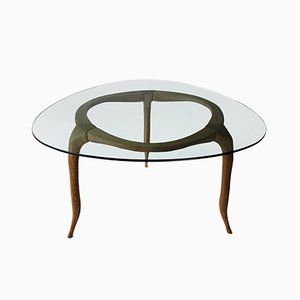
Back to Back Sofa von Nigel Coates

Crusty Esstisch von Nigel Coates
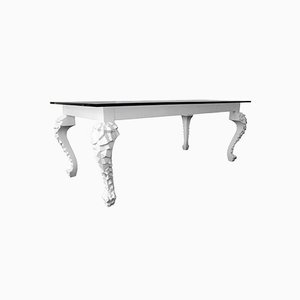
Click Clack Esszimmerstuhl von Nigel Coates

Lete Sospensione Hängelampe von A. Anastasios für Artemide
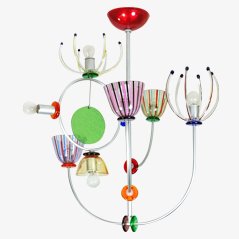
Carry Artids Flaschenvase von Nigel Coates

Carry Artids Goldfish Bowl by Nigel Coates
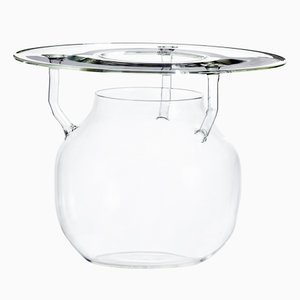
Carry Artids Kübelvase von Nigel Coates



















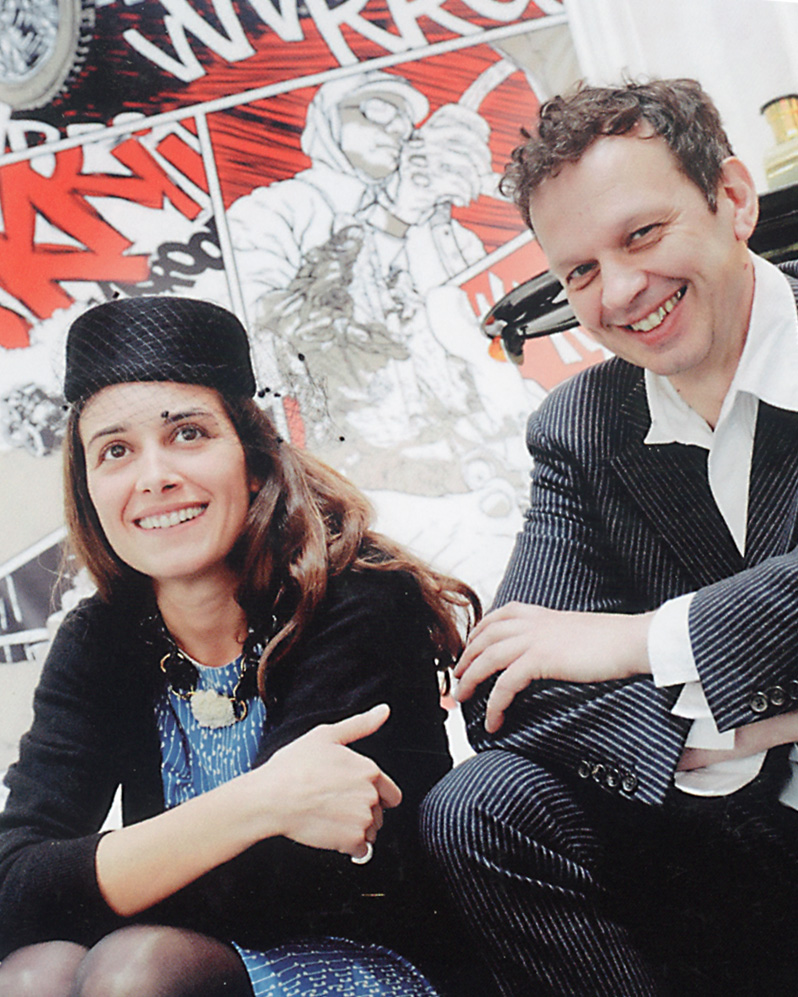 Ambra Medda with Tom Dixon
© Ambra Medda
Ambra Medda with Tom Dixon
© Ambra Medda
 Scrapchair, 1984, by Tom Dixon
© Bonhams Auctioneers
Scrapchair, 1984, by Tom Dixon
© Bonhams Auctioneers
 Portrait courtesy of Tom Dixon
Portrait courtesy of Tom Dixon
 Adidas fashion line by Tom Dixon
© Adidas
Adidas fashion line by Tom Dixon
© Adidas

